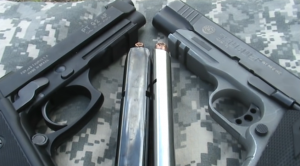We recognize we’re bending “First Gear” convention a little this week, but perhaps you’ll find it worthwhile all the same. Ta-da: a very dressed-up Glock 43!
Not new, we recognize, and therefore not really a first look, but the diminutive single-stack, carry-friendly 9 mm has now been out long enough for an aftermarket to develop, and this certainly merits “First Gear” treatment. We think you’ll see why it’s become a go-to companion of a very welcome sort.
Glock G43
The pistol itself has been a superb performer. Despite a short operating stroke and dual spring recoil system, it’s been impressive with a wide range of bullets and loadings. Thumpy defensive hollow-points perturb point-of-aim surprisingly little, but that’s the point of the dual springs.
What’s amazing is how soft-shooting the 22-ounce (loaded) pistol is with “target” grade ammunition, especially in 147-grain weights. While it’s much tougher to find, the same effect is evident in light-bullet loadings like 90 and 95 grains. The ubiquitous 115s are more than satisfactory, too—we just detest them so thoroughly that we’d prefer to make no reference at all.
These may seem like gun-guy (or -lady) minutiae, but what these traits uniformly translate into is very early confidence with the G43. Inexperienced shooters have that ultra-satisfying “wow” reaction when reliable hits appear at two-, three- and four-times-conventional defensive ranges, and more seasoned shooters just go buy one. Even “stock,” it’s that good.
Robar
As much as we love the stock configuration, we’ve been itching for years to send a Glock off to Robar and let them do their thing. It came back, as our friends across the pond might say, “a treat.”
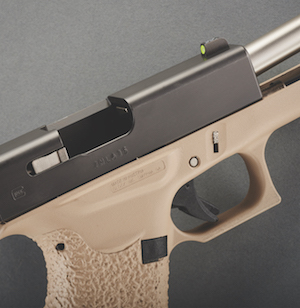
14-NR-017, SHOT Show, Las Vegas
The short version of changes is a necessity, as there’s a lot going on. Inside, Robar NP3®-ed most of the metal parts. This high-lubricity coating makes all contact/wear surfaces super slick, with corresponding improvements in apparent trigger press weight and ease of cleaning. We sorta breathe heavily on the innards, and most of the remaining crud comes off. We say “remaining” because hardly anything sticks in the first place. Same thing with the barrel: Fouling wipes off for the most part. We lube the pistol as normal, but it hardly seems needed.
Outside, however, are changes we liked even more. The tan frame is cosmetic, of course, but the grip stippling is emphatically not. We thought the original Gen4s were good to very good in the tactile sense, but Robar’s corrugation is noticeably better. Particularly for those with bigger hands and in the company of a pinky rest-equipped magazine (also stippled), those biggish mitts find great purchase on the G43.
Another frame mod—that of trigger guard relief—we remain agnostic on. This is a gotta-have for some folks, and we approve in theory: The removal of material from the bottom of the guard gets your grip marginally “higher and deeper” in the gun. This is a good thing, as it allows closer alignment of the bore axis with the bones of the forearm. In turn, this gives better control of the pistol as the shot is prepped and made, and faster recovery afterwards, particularly if the first two “P”s are in order. We shot ours side-by-side with an unmodified G43, and the difference is below our threshold of detection (or too thoroughly disguised by the superb Robar stippling). This high-and-deep thing is already such a strong suit for the Glock design that perhaps we’re just numb to the difference. Suit yourself in this regard: Certainly, it isn’t wrong.
Read full article at America’s First Freedom
This page is an archive. To learn more about archive pages click here
The responses below are not provided, commissioned, reviewed, approved, or otherwise endorsed by any financial entity or advertiser. It is not the advertiser’s responsibility to ensure all posts and/or questions are answered.
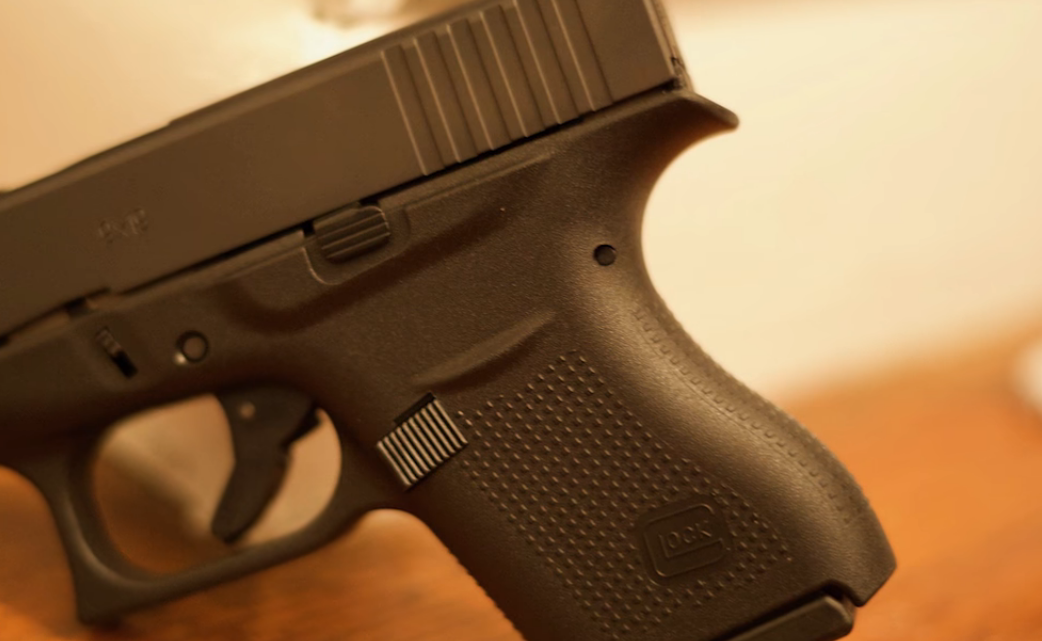
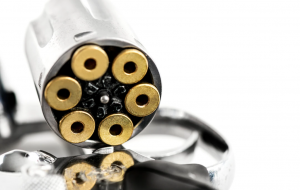
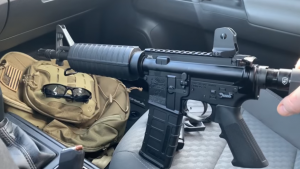
![The Best 2022 Guns For Women [Top 10]](/assets/images/2d31065d92dc958a6b0aa9bf1c583591.png)
